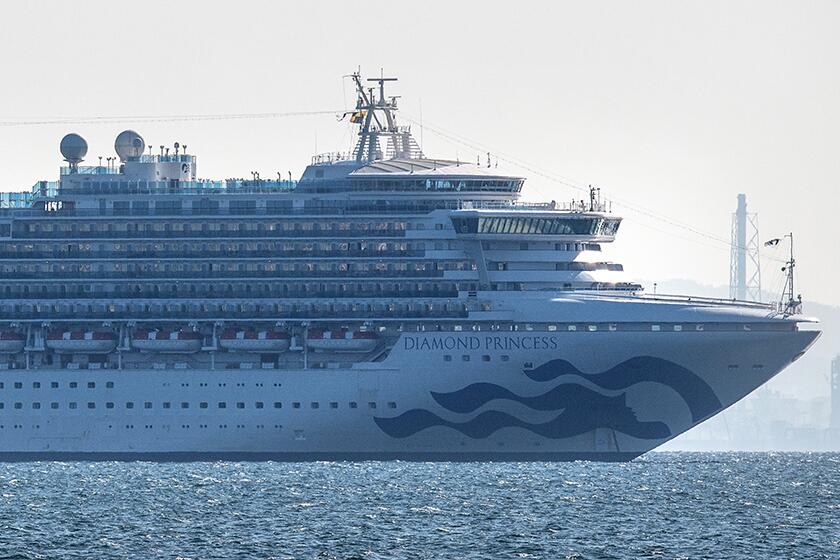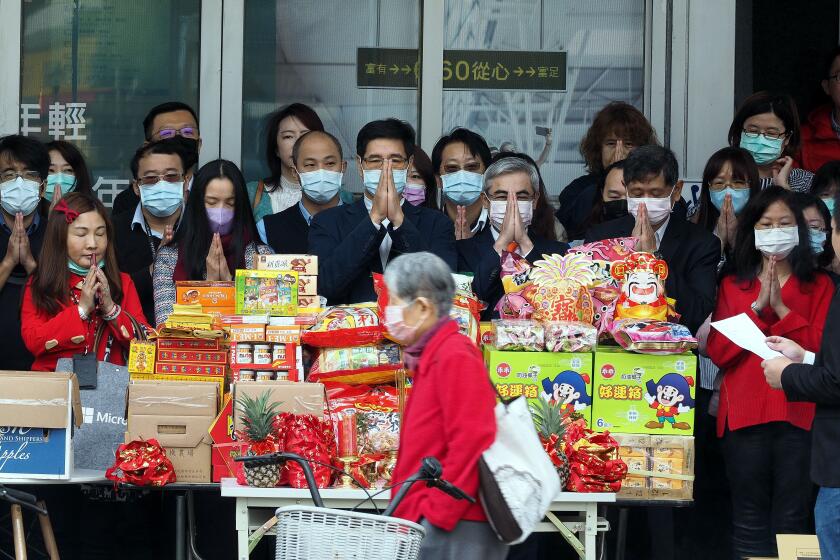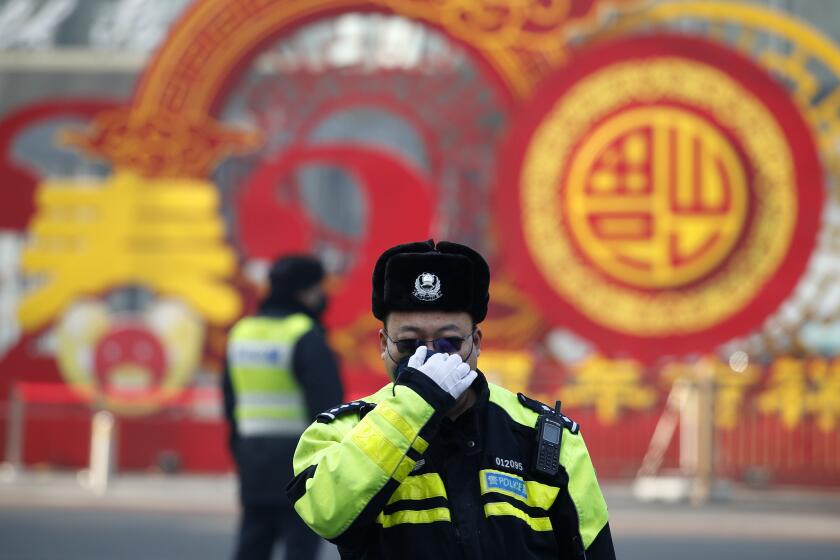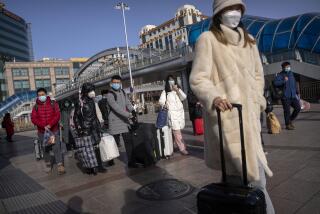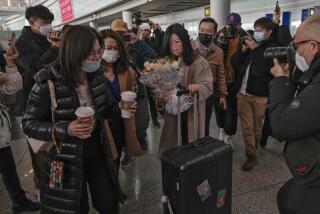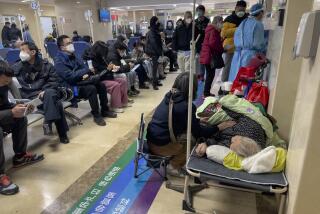China still mostly closed down as coronavirus deaths pass 1,000
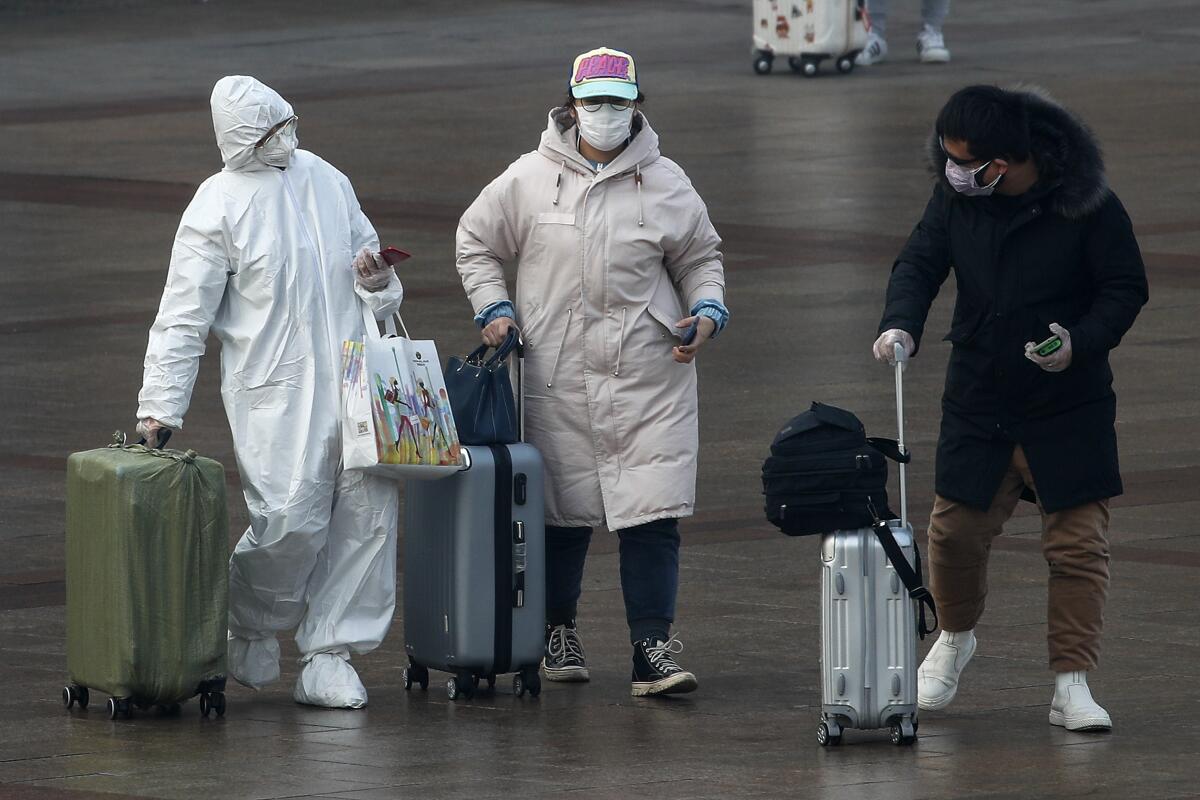
BEIJING — China remains mostly closed for business as the daily death toll from a new virus topped 100 for the first time, pushing the total above 1,000.
Despite the official end of the extended Lunar New Year holiday, many remained at home Tuesday with around 60 million people under virtual quarantine.
President Xi Jinping visited a health center to rally public morale amid little sign the outbreak is abating.
Authorities in Hong Kong evacuated people from an apartment block where four were found to be infected, raising fears the virus may be spreading through plumbing, similar to what happened in 2003’s deadly SARS outbreak.
The 195 Americans who have been under a 14-day coronavirus quarantine have been released. None of the travelers who flew into March Air Reserve Base last month tested positive for coronavirus, health authorities said.
The latest developments:
Xi seeks to boost morale
In a bid to boost morale, Xi visited a community health center in Beijing and expressed confidence in the “war against the disease.”
Xi wore a surgical mask and had his temperature taken before expressing his thanks to health workers on behalf of the ruling Communist Party and government. “We will most definitely win this people’s war,” he said during his Monday visit, videos of which were repeated every hour Tuesday on state television’s news channel.
Much of Xi’s message was focused on calling for citizens to follow the party’s dictates and aimed at minimizing the potentially massive economic impact of the outbreak.
His appearance came amid questioning of the government’s handling of the crisis, particularly the failure of local officials in the worst-hit city of Wuhan to clarify the extent of the outbreak. Public anger has been inflamed over the death of a young doctor sickened by the virus who had been threatened along with seven others by police for warning of the potential for a major outbreak as early as December.
The Diamond Princess is off Yokohama, Japan, with about 3,700 passengers and crew.
Provincial health officials sacked
With the death toll from the virus topping 1,000 and no end in sight, heads are beginning to roll among officials for mismanaging the crisis.
While no central government-level officials have lost their jobs, state media reported Tuesday that the top health officials in Hubei province, which surrounds the epicenter of Wuhan, have been relieved of their duties.
No specific reasons were given, although the province’s initial response was deemed slow and ineffective. Speculation that higher-level cadres could be sacked has simmered, but doing so could spark political infighting and be a tacit admission that the Communist Party dropped the ball.
The virus outbreak has become the latest political challenge for the party and its leader, Xi, who despite accruing more political power than any Chinese leader since Mao Tse-tung, has struggled to handle crises on multiple fronts. Those include a sharply slowing domestic economy, the trade war with the U.S. and pushback on China’s increasingly aggressive foreign policies.
Almost all of the deaths reported Monday were in Wuhan and surrounding cities. The number of newly confirmed cases fell slightly to 2,478 from 3,062 the day before, bringing the total to 42,638 on the Chinese mainland.
The threat posed by Taiwan’s much larger neighbor, China, is compounded by the coronavirus, arriving with travelers in a connected cross-straits economy.
Risks of restarting business
The crossing of more grim thresholds is dimming optimism that the near-quarantine of some 60 million people and other disease control measures are working.
The restart of business poses a risk of further spreading the virus, but the country has little recourse, said Cong Liang, secretary general of the National Development and Reform Commission, China’s main economic planning body.
“Without the reopening of businesses, in the short term, it will affect the supply of medical material and ... in the long run, it will affect the supply of all kinds of production and life materials and will make the control and prevention efforts on the front line unsustainable. The target of defeating the epidemic will not be reached,” Cong said at a news conference.
With about the virtual quarantine and rigid travel restrictions, any return to normalcy on a national level is still weeks or months away.
Some 2,656 new coronavirus cases were reported in the 24 hours ending at midnight Saturday, most of them in the central province of Hubei, China.
Hong Kong
In Hong Kong, authorities evacuated some residents of an apartment block after two cases among those living there raised suspicion that the virus may be spreading through the building’s plumbing.
It was reminiscent of the SARS outbreak that killed hundreds in the semiautonomous Chinese city. The biggest number of connected cases in that outbreak was in one apartment complex where the virus spread through sewage pipes.
Health officials called it a precautionary measure after a 62-year-old woman diagnosed with the virus Tuesday was found living 10 floors below a man who was earlier confirmed with the virus. The woman’s son and daughter-in-law who live with her were among seven new cases reported Thursday, raising the city’s total tally to 49.
The 34 households evacuated live vertically above or below the woman and share the same sewage system. A modified toilet drainage pipe in her unit may have helped spread the virus and officials are checking if any other units have made such alterations while they disinfect the building.
Why did the U.S. government imposed a quarantine now for coronavirus, when no such mandate has been issued in over 50 years, despite routine outbreak of disease?
U.S. suspends visa services, evacuees set to leave quarantine
Among the growing number of travel restrictions, the U.S. said that, as of Monday, it is suspending regular visa services at the embassy in Beijing and consulates general in Chengdu, Guangzhou, Shanghai and Shenyang. The consulate general in Wuhan has already been closed and its staff evacuated.
A presidential proclamation issued Feb. 2 already banned entry to the U.S. to foreigners or nonpermanent residents who had been in China fewer than 14 days before their arrival. Exceptions were made for foreign diplomats, flight crew and family members of U.S. citizens or permanent residents.
Meanwhile, nearly 200 evacuees prepared Tuesday to end their two-week quarantine at a Southern California military base where they have been living since flying out of China.
None of those who flew into March Air Reserve Base has tested positive for the disease, health authorities said, although one evacuee at another base was found to have the highly infectious virus and was in hospital isolation.
The group, which includes children, arrived from China on Jan. 29, taking chartered flights from Wuhan.
There have been 13 confirmed cases in the United States, including seven in California, according to the U.S. Centers for Disease Control and Prevention and other health officials.
More than 460 cases have been confirmed outside mainland China, including two deaths in Hong Kong and the Philippines. Of those, 135 are from a cruise ship quarantined in Yokohama, near Tokyo.
More to Read
Sign up for Essential California
The most important California stories and recommendations in your inbox every morning.
You may occasionally receive promotional content from the Los Angeles Times.
